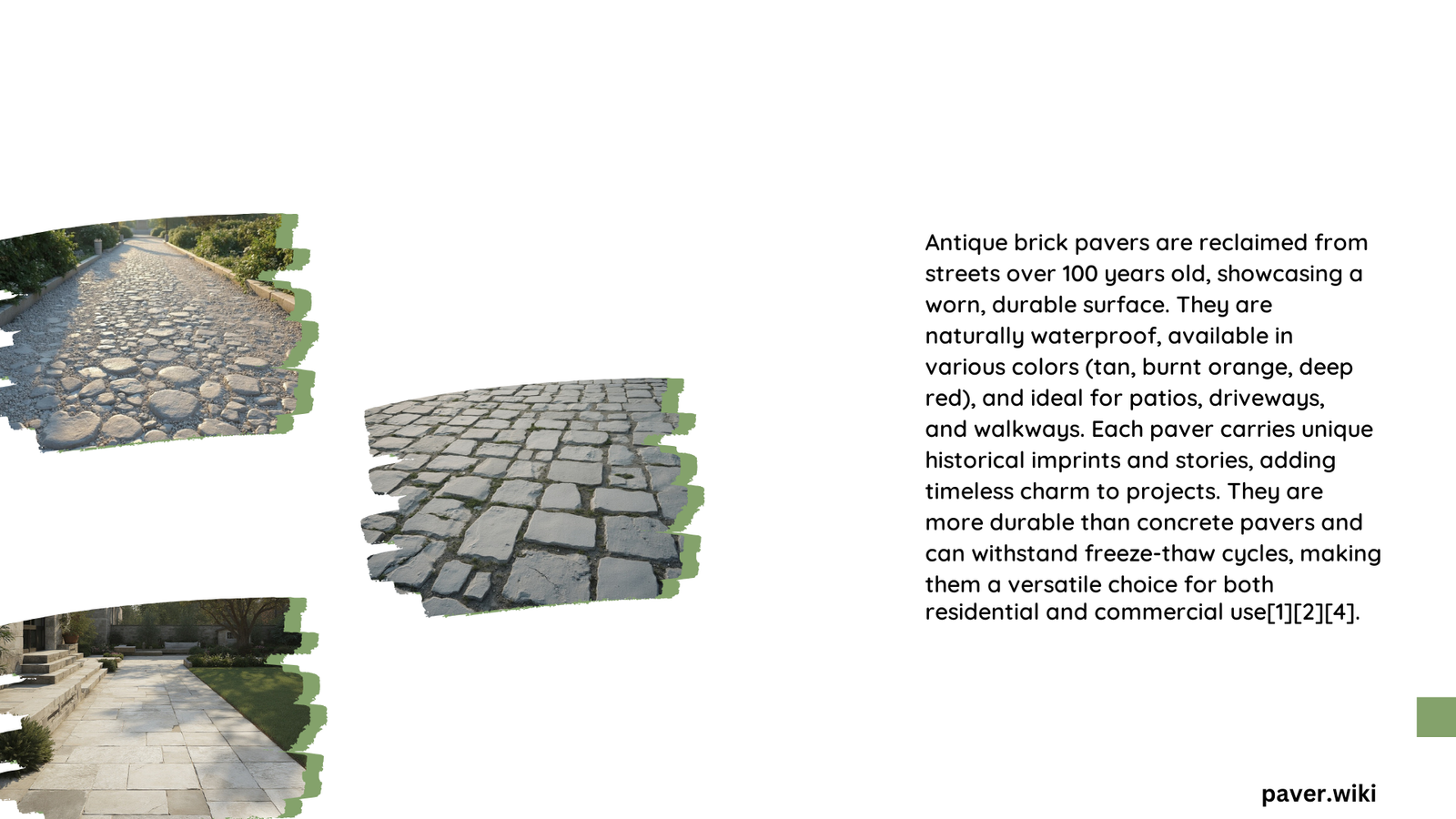Brick pavers antique offer a timeless charm and durability that modern alternatives struggle to match. These reclaimed or historically-inspired pavers bring character and authenticity to outdoor spaces, from Victorian-era gardens to contemporary designs with a vintage twist. This guide explores the intricacies of antique brick pavers, covering installation techniques, design specifications, sourcing options, and restoration challenges.
What Are the Key Installation Techniques for Antique Brick Pavers?
Installing antique brick pavers requires careful planning and execution to preserve their unique characteristics while ensuring a stable and long-lasting surface. Here are the essential steps and considerations:
Tools and Materials
- Plate compactor
- Rubber mallet
- Cutting tools (hammer, cold chisel, brick set, wet saw)
- Leveling tools (laser level, screed, mason’s line)
- Edging materials (pressure-treated wood, plastic, metal)
- Geotextile fabric
- Aggregate base material
- Sand for bedding and jointing
Substrate Preparation
- Remove topsoil to the recommended depth (typically 8 inches)
- Compact the soil using a plate compactor
- Install geotextile drainage layer if necessary
- Lay and compact aggregate base (4-6 inches for pedestrian areas, 8-12 inches for driveways)
Paver Installation Process
- Spread a 1-2 inch layer of concrete or sharp sand over the aggregate base
- Level the sand layer carefully
- Lay pavers into the sand, ensuring level placement
- Use a rubber mallet to secure pavers in position
- Adjust for irregular depths of antique bricks to maintain a rustic effect
Jointing Methods
- Fill joints with masonry sand or polymeric sand
- Compact sand into joints using a plate compactor
- If using polymeric sand, water according to manufacturer’s instructions
What Are the Design Specifications for Victorian Brick Pavers?

Victorian-era brick pavers have distinct characteristics that set them apart from modern alternatives:
Dimensions and Shapes
- Typical size: 2 1/4 inches x 7 5/8 inches x 3 5/8 inches (variations exist)
- Irregular, slightly rounded edges for historical authenticity
Color Palettes
- Earthy tones: reds, browns, yellows
- Natural clay colors reflecting regional variations
Popular Patterns
- Running bond
- Herringbone
- Basketweave
Historical Accuracy Considerations
- Match original materials and colors as closely as possible
- Use traditional installation methods (sand or mortar setting)
- Consider regional variations in brick styles and patterns
Where Can I Source Antique Brick Pavers and What Are the Costs?
Finding authentic antique brick pavers can be challenging, but several options exist:
Sourcing Options
- Reclaimed brick yards
- Salvage yards
- Online marketplaces
- Specialty brick suppliers
- Local historical societies
- Architectural salvage stores
Cost Estimates
- Price range: $5 to $20 per square foot
- Factors affecting cost:
- Condition
- Rarity
- Source
- Historical significance
Availability and Condition Grading
| Grade | Description | Typical Price Range |
|---|---|---|
| Excellent | Minimal wear, consistent color | $15-$20 per sq ft |
| Good | Some wear, slight color variations | $10-$15 per sq ft |
| Fair | Significant wear, noticeable variations | $5-$10 per sq ft |
What Challenges Arise in Historical Brick Paver Restoration?
Restoring antique brick pavers presents unique challenges that require careful consideration:
Preservation Techniques
- Clean bricks carefully to remove old mortar and debris
- Use compatible materials for repairs and new installations
- Avoid modern materials that could alter appearance or durability
Necessary Materials
- Compatible mortar mixes
- Traditional sand or polymeric sand for jointing
- Period-appropriate edging materials
Compliance with Local Heritage Regulations
- Consult local historical preservation societies
- Document restoration process for regulatory compliance
- Use approved techniques and materials to maintain authenticity
Common Restoration Challenges
- Matching color and texture of original bricks
- Addressing uneven settling and wear patterns
- Integrating modern drainage and stability requirements
- Balancing historical accuracy with modern safety standards
By understanding these aspects of antique brick pavers, homeowners and contractors can create stunning, historically accurate outdoor spaces that stand the test of time. Whether installing new pavers with an antique look or restoring a genuine Victorian-era patio, attention to detail and respect for historical techniques are key to success.
